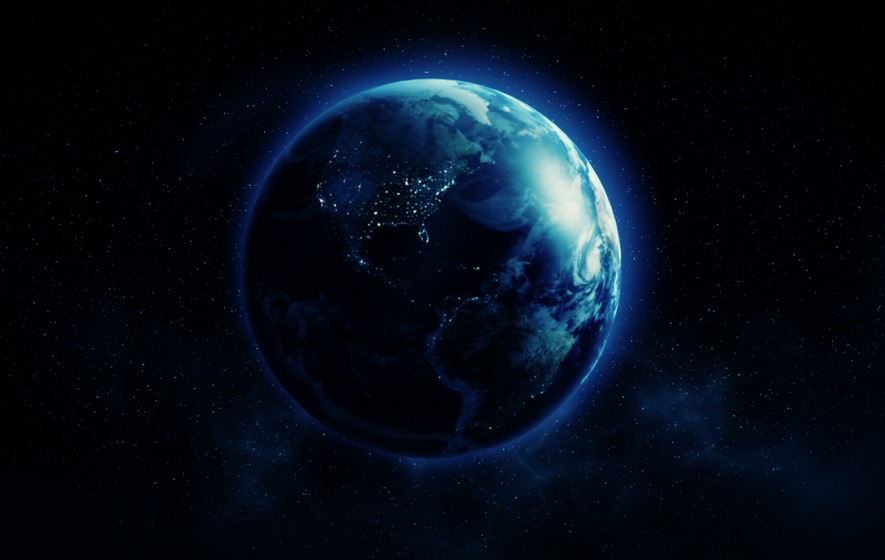More often than not mankind acquired his knowledge of the universe in much the same way that a child learns about the society which he is a part of. Just like as a growing child progressively becomes of the larger units of human organization— Family, neighborhood, city and so on. Astronomers have slowly endorsed the hierarchical arrangement of the heavens. So, the astronomers come up with the idea of extraterrestrial life. That is to find the possibility of the existence of life beyond Earth.
An interesting question that has been asking throughout the history of astronomy is,” can life exist beyond the earth, if so what form it might likely to take?”
Further findings for extraterrestrial life [ET—Life] led to an entirely new branch of science—Exobiology, though as yet we cannot come across an exact answer.
There is still a sizeable discussion about the origin of extraterrestrial life. In the early 20th century, it was Swedish scientist Svante Arrhenius who proposed the “panspermia theory”, according to which life on earth did not stem here but was brought by some of the meteorites collided with earth. Though this idea never met much support due to the complexities it further resulted in. Later, Sir Fred Hoyle revived the idea, on their hypothesis, life on earth was actually originated somewhere in space and brought here by mean of a Comet. This idea too met scant support because whole recourses of space were mandatory rather than a restricted area like planet earth.
In carrying out practical research for the extraterrestrial life on other planets as in our solar system, the scientists had to be dependent on the space research method, so the world like the moon, might rules out at once. The Venus is also ill-suited in every quarter since the giant and closest planet to the earth has no solid surface. Saturn’s satellite Titan and Enceladus seem good candidates for ET-life since all ingredients of life are evident there. But the very low temperature appeared to preclude them.
We left with only one candidate—The Mars, which has always been regarded as the possible abode of life. After a decade’s long research and analysis carried out by Curiosity and Mars rovers, scientists are still unsure that could we ever be able to colonize earth?
Astronomers, therefore, shifted search to beyond our solar system and have discovered dozens of potentially habitable planets in other solar systems—called “Super-Earths” concerning to extraterrestrial life. In February 2017, they caught another solar system—Trappist-One, quite similar to our solar system and have three earth-like planets in its habitable zone. Since then, the researchers came across plenty of places that could park as men’s first interstellar colonies.
Super-Earths are perhaps the most common planets in this unbound universe that may come up to the expectations of having an extraterrestrial life. By 2018, astronomers have discovered 2,342 confirmed exoplanets and revealed the existence of around 2,245 others. Among these, at least 30% are conceded as Super-Earths. While a few percents of these rare planets are orbiting in the habitable zone of their host star that sometimes spoke out as the “Goldie-lock” zone. In this locality, the planet’s surface has perfect temperature ranges which are necessary for liquid water. The other two pre-requisites are the size and mass of the planet. It should be double than earth radius and ten times more massive. Since the massive planets have a stronger gravitational pull, the research always weighs up extra mass is what makes Super-Earth, a perfect home for living.
Another surprising ingredient is the unusual phenomenon of planetary plate tectonics– a process that shapes a planet’s surface by stretching, compression, or other forces acting on the planet’s rigid outer layer, called the lithosphere. Just after their formation, rocky planets like Earth are covered by a crust – a hard and rigid layer that is about 10 miles thick on average and forms part of the lithosphere. The most molten and very viscous interior of the planet – called mantle, swirl about constantly by convective currents. The flow of heat and melt in the upper mantle is the source driving plate tectonics. As Ward and Brownlee put it in their book, in “Rare Earths”, plate tectonics promotes environmental complexity and the exchange occurs through global cycles.
Our Milky Way galaxy carries 100 billion stars, many among them are identical to our Sun. There is considerable evidence that what happened to our Sun may presumably happen to other solar-type stars as well. Astronomers should bear in mind that even if they happen to locate a planet similar to Earth, moving around a star like Sun, even then they would have no guarantee that life can sustain and survive there. So, the idea of extraterrestrial life doesn’t seem to come true.

Saadeqa Khan is the founder, CEO, & Editor-in-Chief of Scientia Pakistan. She’s a member of the Oxford Climate Journalism Network (Second Cohort) and NASW. Saadeqa is a fellow of NPF Washington, The Falling Walls Foundation, and the Science Journalism Forum. Saadeqa has won several international journalism grants and awards for her reports.

